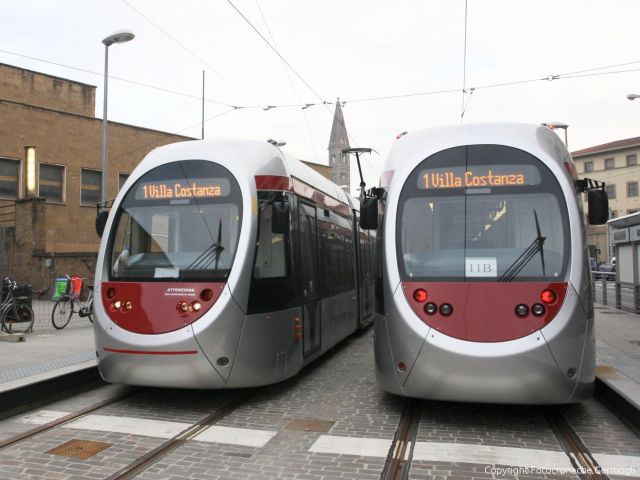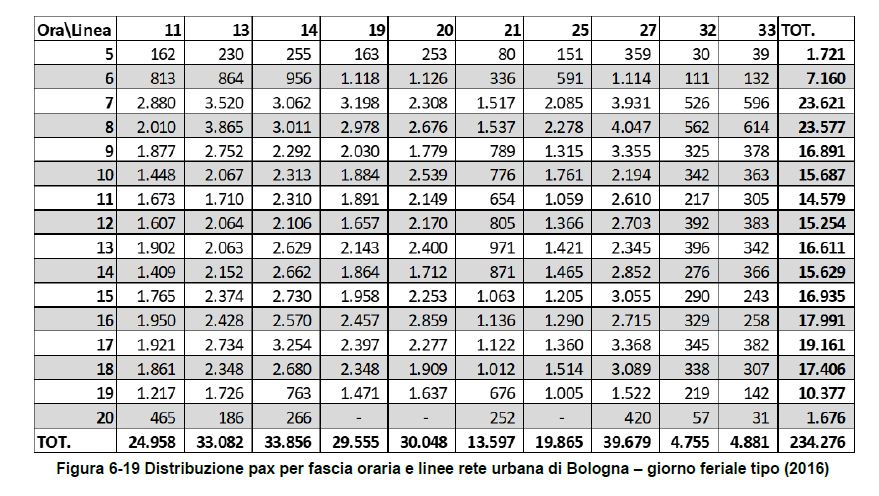
1/ After a little exchange here about the unsolvable problem of transit terminology, I decided to start a new regular thread over holiday period: "RAIL TRANSIT TERMINOLOGY"
Why? Just for the fun of opening up infinite, inconclusive discussions between transit nerds 👹



Why? Just for the fun of opening up infinite, inconclusive discussions between transit nerds 👹
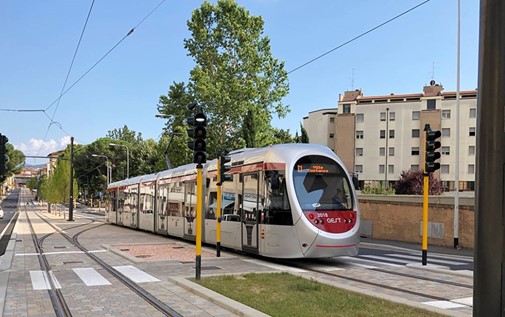
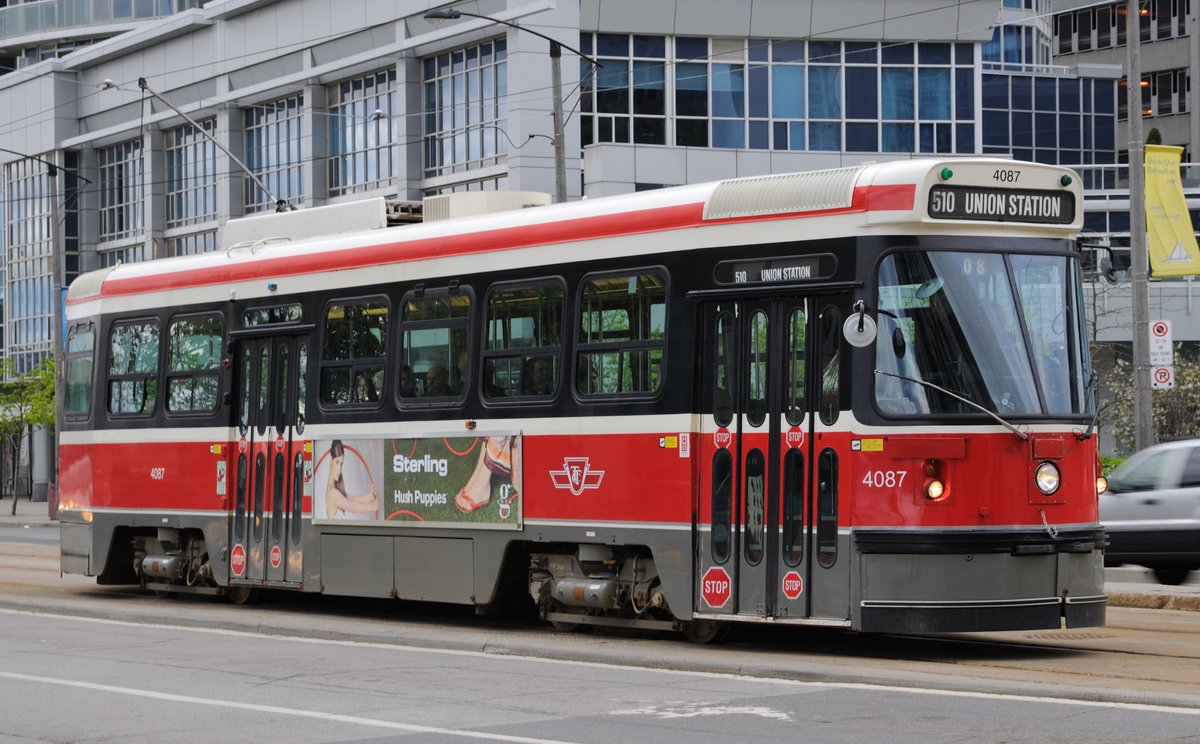
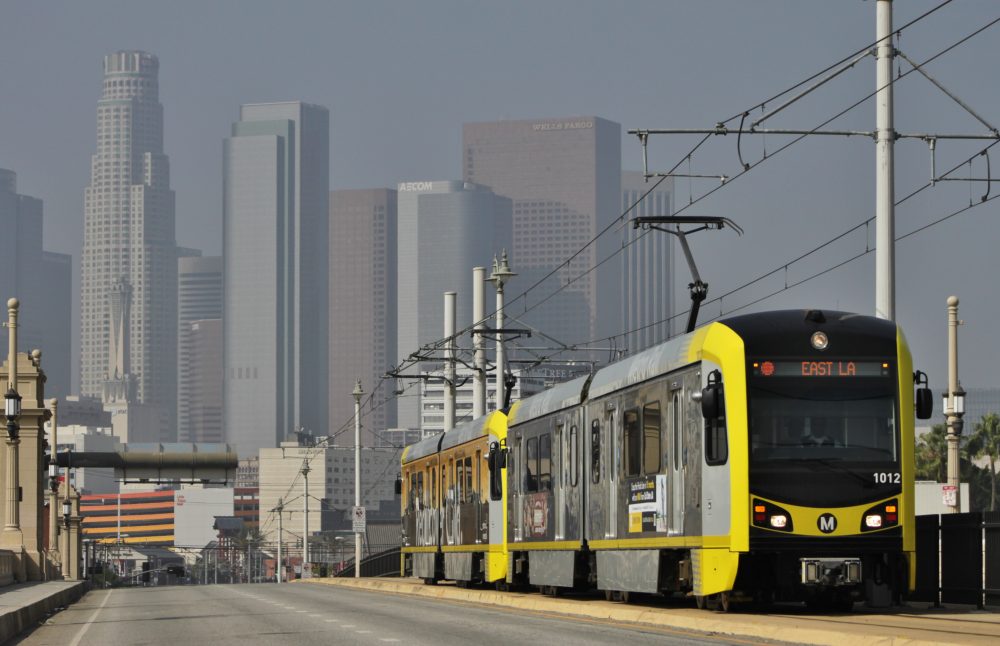
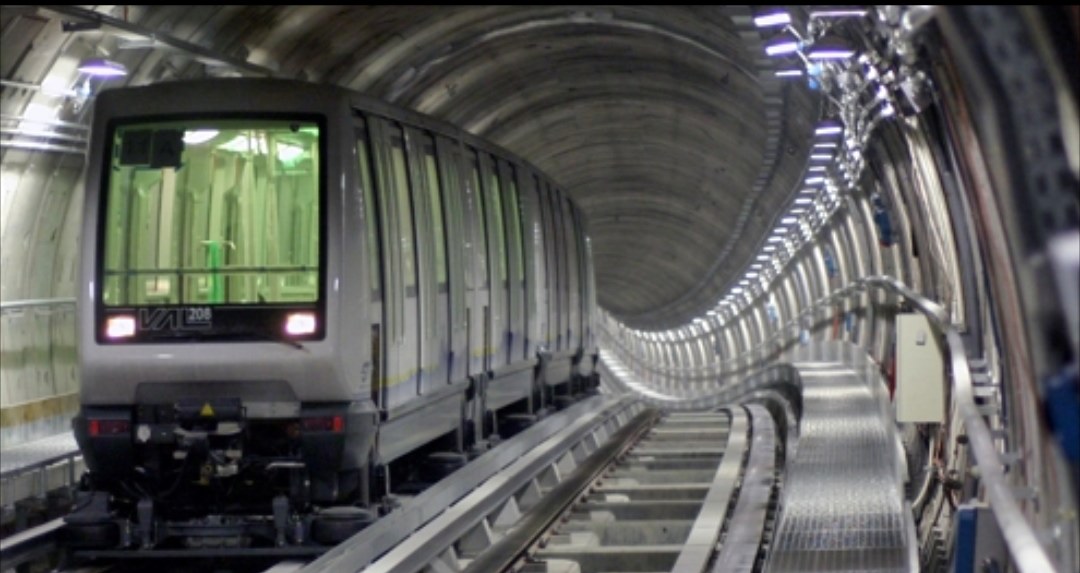
2/ I will try to jungle between European and NA examples, to try to understand to which extent it is possible to compare oranges with apples when we talk about the great variety of rail transit choices and why it's always useful to dig into details (looking for the evil).
3/ Importantly, I will take into account what I consider 3 main interrelated factors, the first being the most important :
1. urban insertion (how does a given alignement interact with the urban environment).
2. Type of rolling stock/rail technology.
3. Drivers of choice
1. urban insertion (how does a given alignement interact with the urban environment).
2. Type of rolling stock/rail technology.
3. Drivers of choice
4/ The first episode is about what I call the "MODERN EUROPEAN TRAMWAY" or, if you prefer, the "French-style Tramway"
The progenitors of them all are Nantes and Grenoble in the late 1980s, the cities that kickstarted the so-called French tramway renaissance

The progenitors of them all are Nantes and Grenoble in the late 1980s, the cities that kickstarted the so-called French tramway renaissance
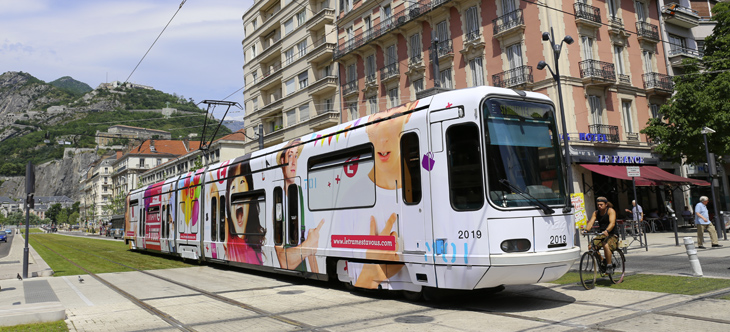

5/ Alignement-wise, the European-Modern-Tramway is a very urban creature:
It runs mostly on-street, but in a 100% (or so) dedicated right-of-way, paved or greened, with discreet elements separating it from other road space: a small curb, a change in paving, bollards, etc.



It runs mostly on-street, but in a 100% (or so) dedicated right-of-way, paved or greened, with discreet elements separating it from other road space: a small curb, a change in paving, bollards, etc.
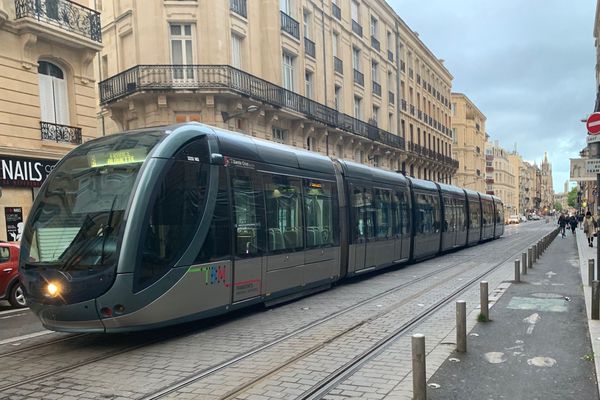
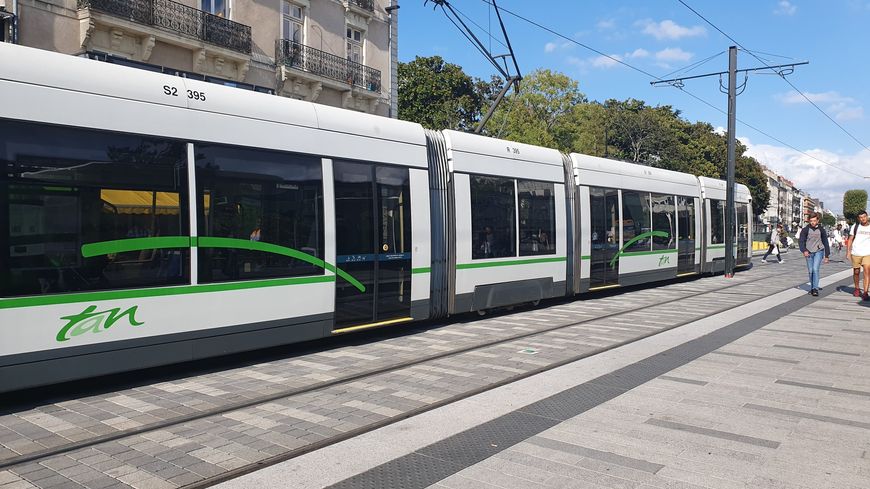
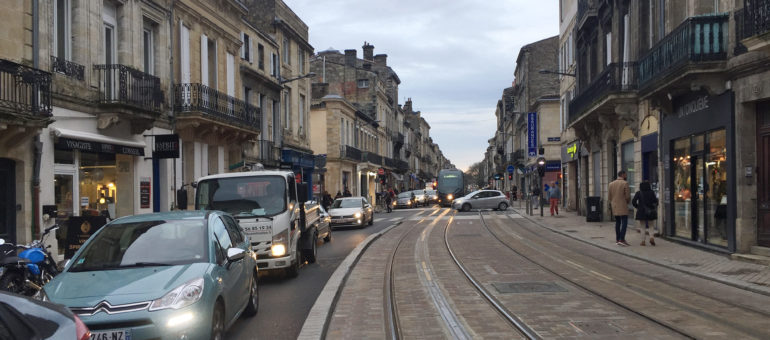
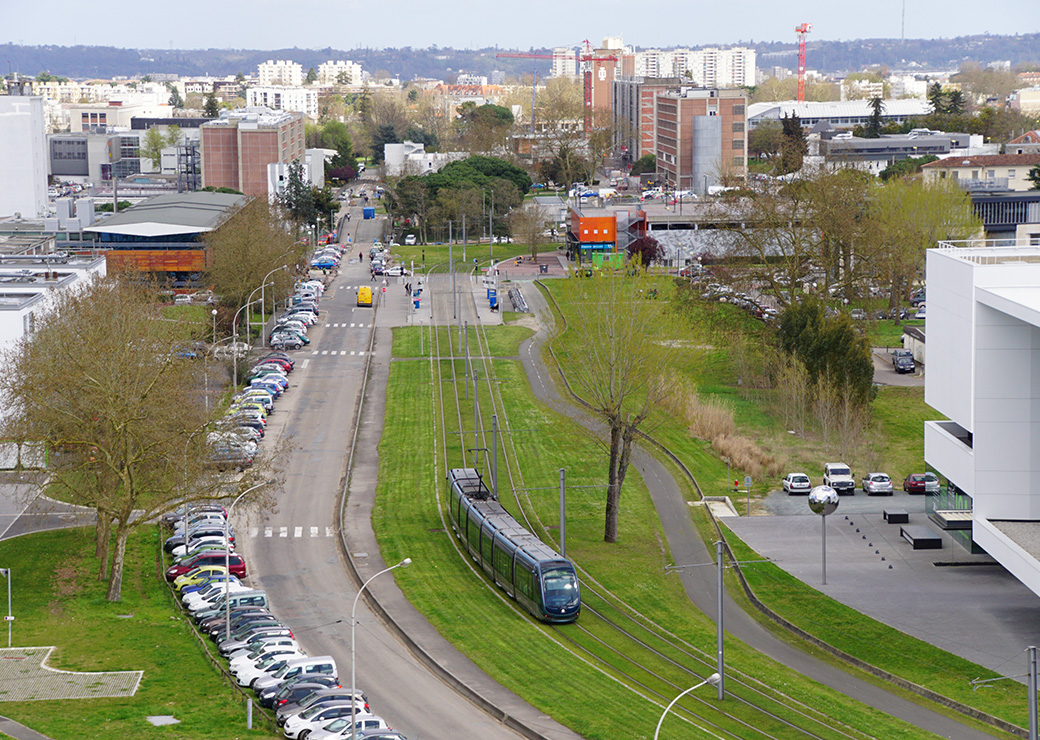
6/ In many central streets, it can run in mixed traffic with pedestrians: Examples across France, Europe and beyond (e.g. Jerusalem) are countless. 


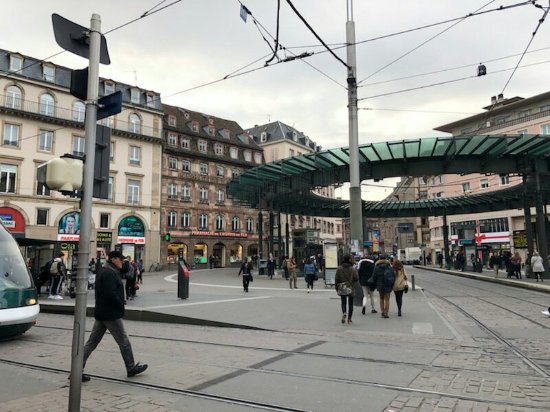
7/ Some grade separation is used in particularly busy intersections or when it's the only solution to grant regularity. It can also run on mixed traffic for very short sections. But both are localized exceptions in an otherwise mostly ground level, but reserved, alignement 

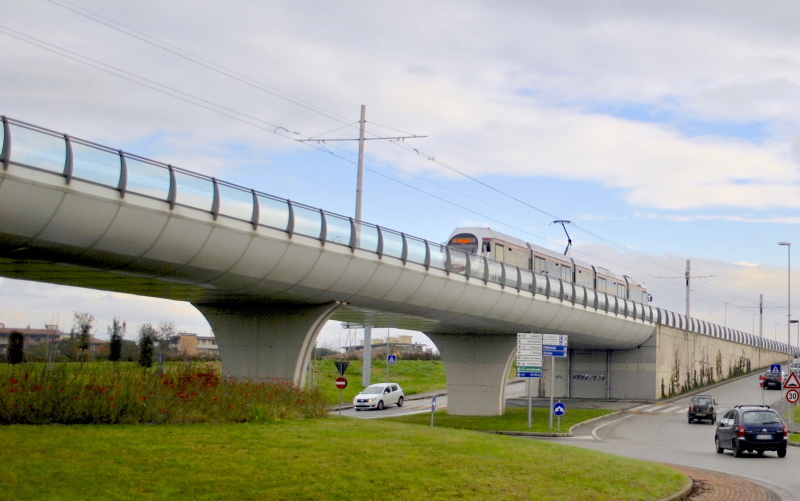
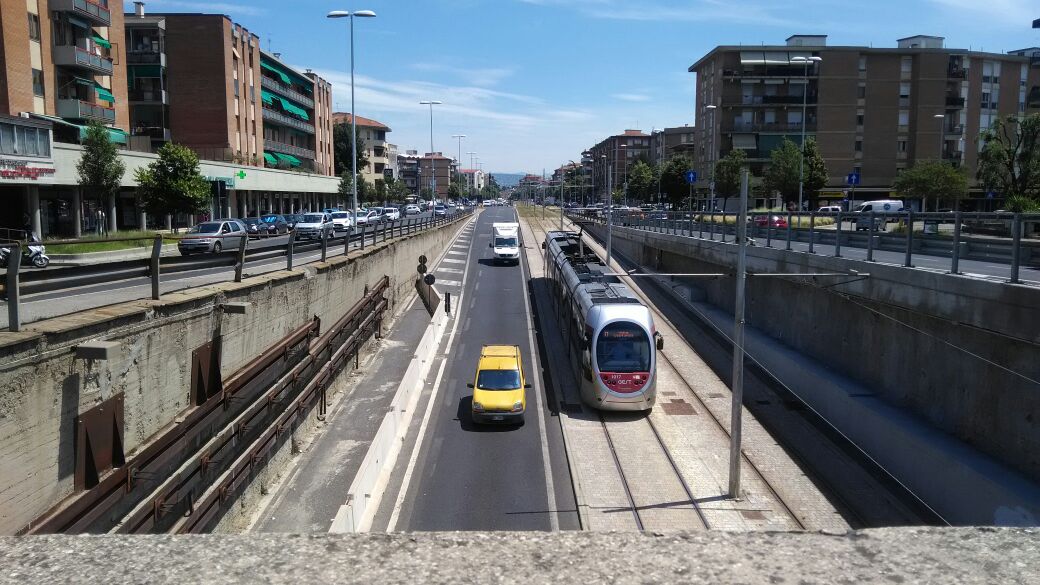
8/ There are some notable exceptions, though, boasting long tunneled sections, like Nice's recently opened line 2, Rouen, Paris T6, Strasbourg short station tunnel etc. But they are rarely longer than a few stations and have nothing to do with pre-metro or stadtbahn. 

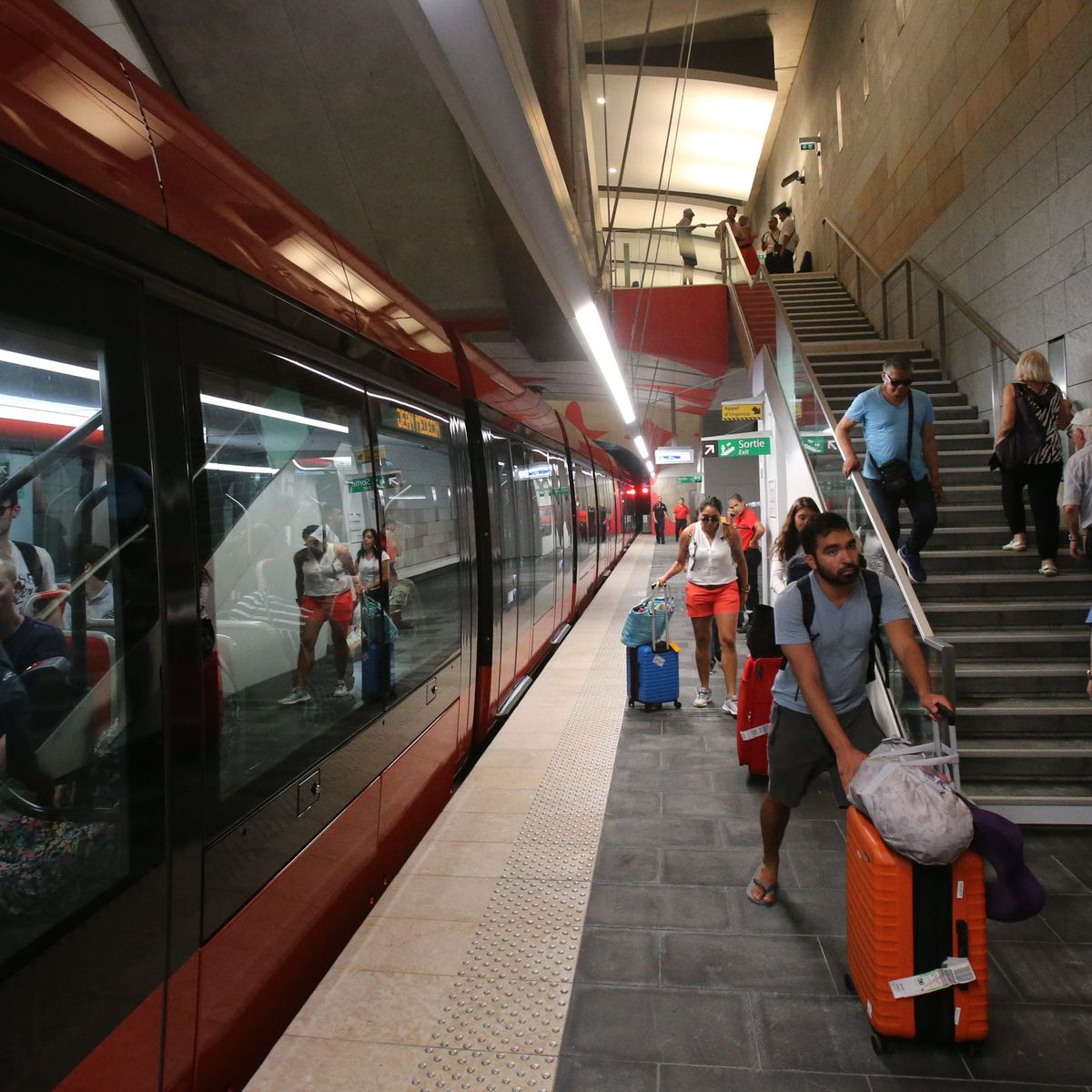
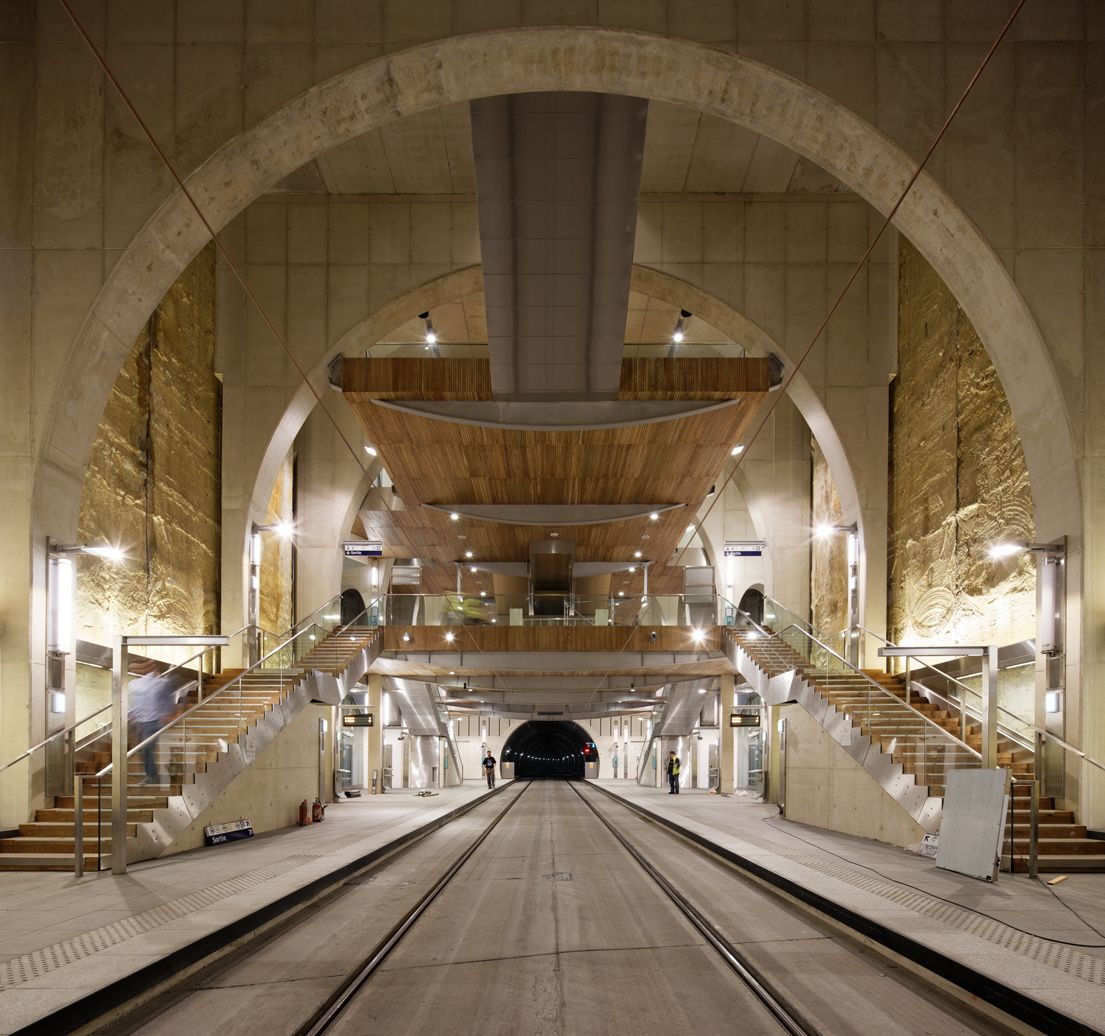
9/ As urban creatures, Modern-European-Tramways tend to have closely spaced stations (< 500m) and run at 50km/h maximum, dropping to 15km/h in pedestrian areas.
Because of those characteristics, they are not very fast: 14-18km/h on average, and have "short" lines (10-15km)
Because of those characteristics, they are not very fast: 14-18km/h on average, and have "short" lines (10-15km)
10/ Another fundamental component defining M-E-T is traffic light priority and remote management from a centralized control center 

10/ Running on-street, M-E-T primarily use paving embedded girder rail, even in grassy areas. Apart the very first ones, they all use 27cm low-floor tramways, normally 32-44m long and no coupling*: Those dimension are important for an easier urban insertion.
*exceptions apply
*exceptions apply
11/ Power supply comes normally from overhead wires, even if wireless technologies are widely used and more so in recent years: APS, fast charging at stops with on board batteries etc.
12/ A technological "curiosity" is of course the translohr, a rubber-tired tramway with central guideway. However, for all the other characteristics, it's just a curious failed tech experiment from the French (one more) within the "Modern-European-Tramway" family. 
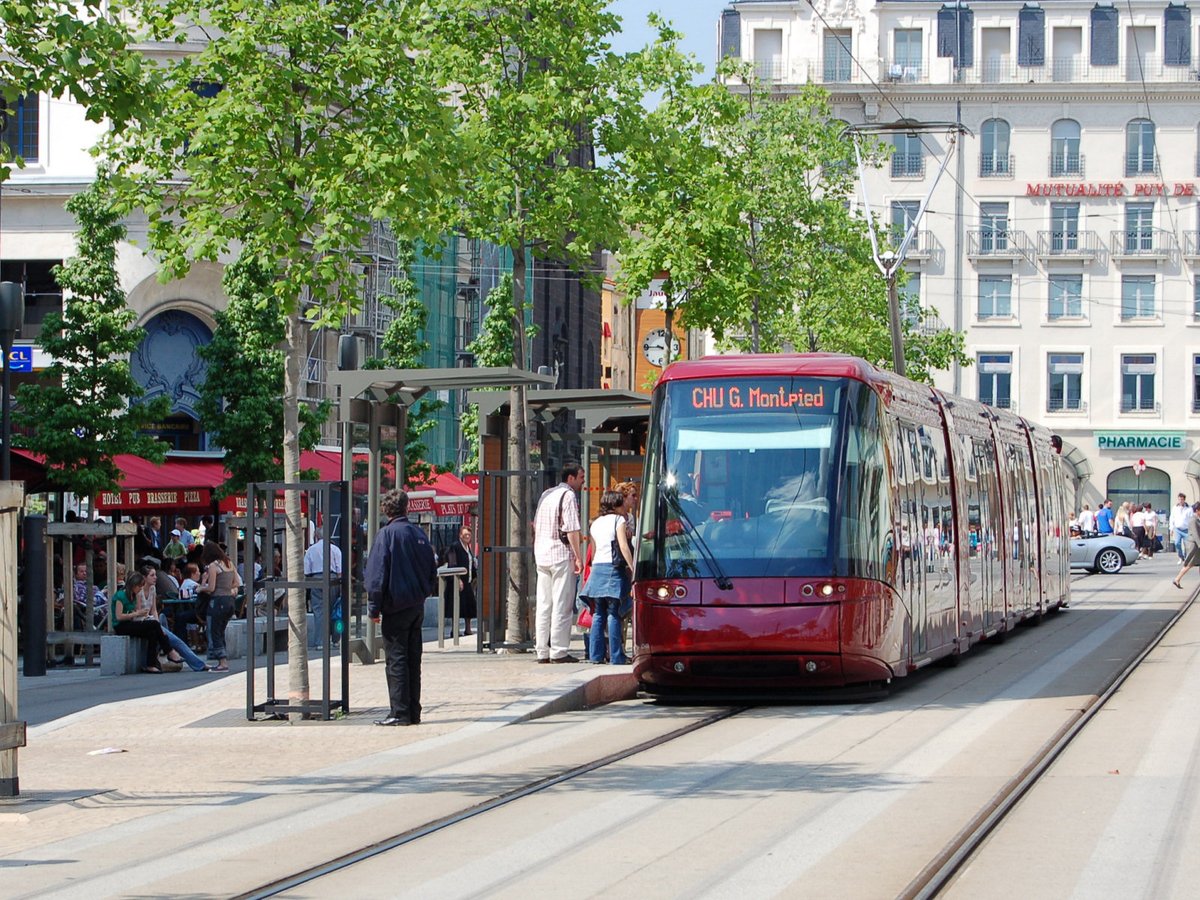
13/ More importantly, all those characteristics derive from the main reasons behind the choice of this "flavor" of rail transit:
- capacity, frequency and reliability more than average speed
- better urban compatibility, even in narrower streets and pedestrian areas
- capacity, frequency and reliability more than average speed
- better urban compatibility, even in narrower streets and pedestrian areas
14/ Finally, the Modern-European-Tramway is a flavor of transit well suited for the typical European medium-size city (<500k) that lost its legacy network in the postwar years and where trips are not so long, roads are not so large, density is average and evenly distributed
15/ Does the M-E-T exist in NA? The simple answer is: NO.
Phoenix LRT is the system that approximate the most to the M-E-T characteristics, but only for alignement and not completely.
Québec city's tramway, if built, will be the first real example of M-E-T in North America.
Phoenix LRT is the system that approximate the most to the M-E-T characteristics, but only for alignement and not completely.
Québec city's tramway, if built, will be the first real example of M-E-T in North America.
• • •
Missing some Tweet in this thread? You can try to
force a refresh






